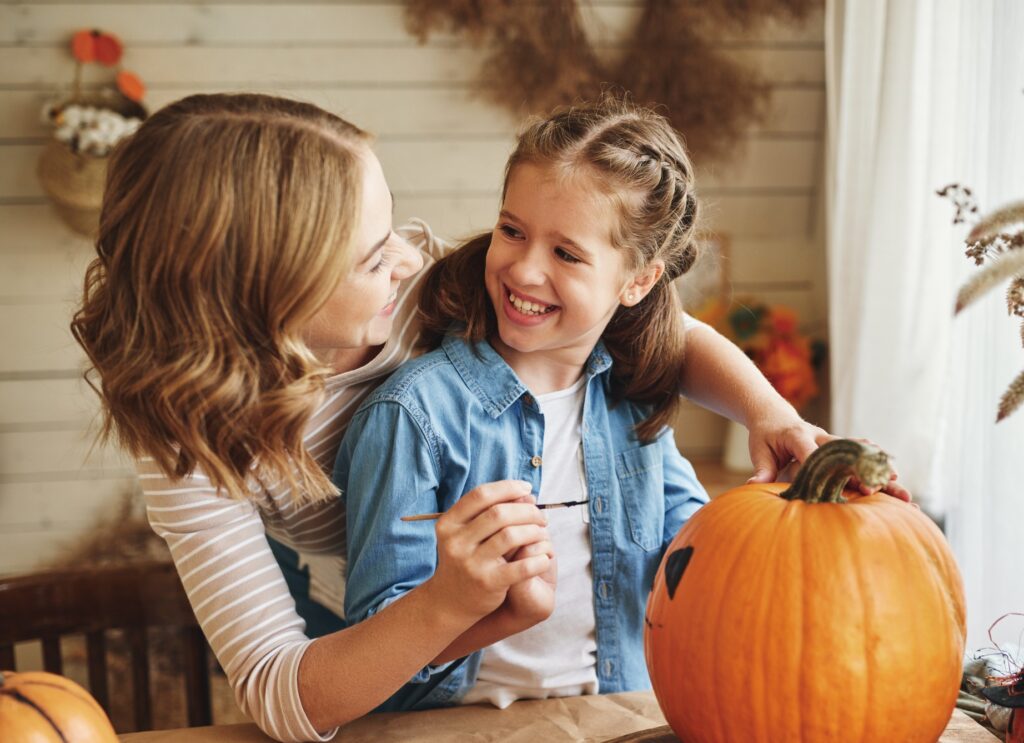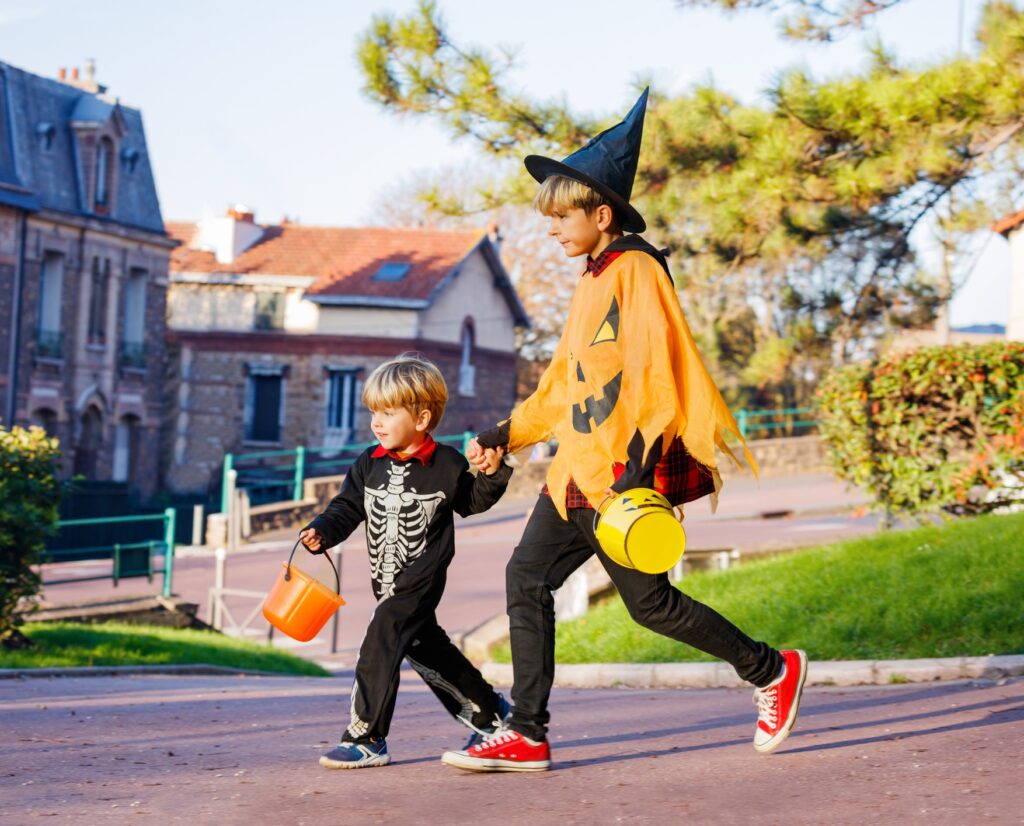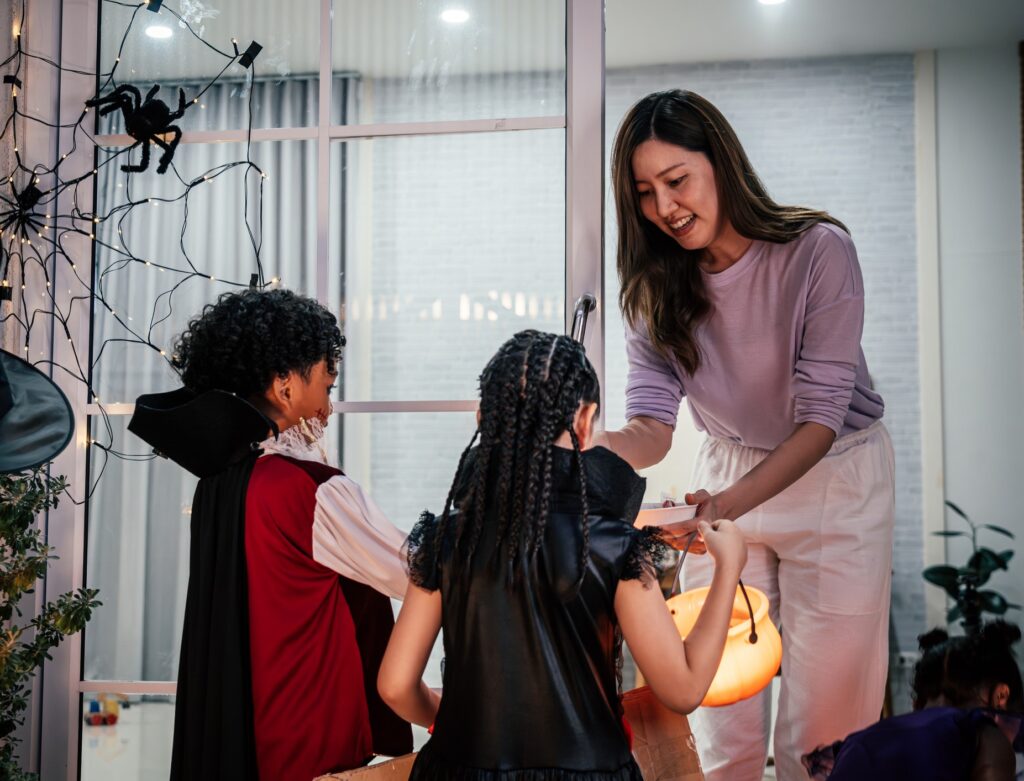“Spooky Season” is supposed to be a fun time for kids of all ages, but danger lurks this time of year, and Halloween can be a busy night for hospital emergency rooms. Observing a few Halloween safety tips can help prevent accidents or injuries.

Justin McGoldrick, MD, enterprise vice president of medical affairs and graduate medical education officer at Covenant Health, says many accidents and injuries can be avoided with a little forethought and planning.
“Have a plan — think through where your kids are going and where they’re not going to go, and make sure they’re aware of safety rules,” Dr. McGoldrick says. “Give them the sage advice to bring candy home before eating it.”
The U.S. Consumer Product Safety Commission (CPSC) reports that more than 3,000 Halloween-related injuries require emergency treatment each year. Common injuries include cuts, burns, and falls:
- Fifty-five percent of Halloween hospital visits are the result of pumpkin carving.
- Twenty-five percent are related to falls while putting up or taking down decoations, tripping on costumes, or falling while walking and trick-or-treating.
- Twenty percent involve cuts, burns, allergic reactions or other Halloween-related mishaps.
Halloween trick-or-treating also is an especially risky time for pedestrian accidents. The National Safety Council reports that children are more than twice as likely to be hit by a car and killed on Halloween than on any other day of the year.
To keep your Halloween from turning into an unintended horror story, follow these safety tips from Covenant Health.
Pumpkin Carving Safety Tips
The friendly glow of a jack-o’-lantern on the front porch is a tradition for many, but pumpkin carving leads to some of the most common injuries. “The majority of cuts and lacerations that we see are from carving pumpkins with traditional knives,” Dr. McGoldrick notes.
- Use pumpkin carving kits instead of kitchen knives. These specifically designed kits reduce the risk of cuts and injury.
- Create a stable work surface for your carving project to avoid slips and accidents.
- Always supervise children.
- Consider alternatives for younger kids such as decorating pumpkins with markers, stickers or paint.

Halloween Costume Safety Tips
Whether your child is a superhero, princess, witch or ghost, costumes are a special part of the Halloween experience. But don’t let costume fun mask potential hazards.

Dr. McGoldrick says many injuries are caused by costumes that aren’t flame-resistant or aren’t highly visible to motorists. Choose costumes withHalloween safety in mind.
- Every part of a child’s Halloween costume should be flame-resistant. Look for “Flame Resistant” on labels when purchasing costumes or costume pieces.
- Steer clear of big, loose sleeves or long skirts that can easily catch fire or cause trips and falls.
- Make sure kids wear sturdy shoes that fit well.
- Hats, scarves and wigs should fit securely to avoid slipping over the eyes. Costume props should be made from soft, flexible materials. Dr. McGoldrick says that hard props and props with points can hurt children if there’s a fall or during “play fighting.”
- Be cautious with masks, which can obstruct vision and breathing. Consider using face paint or makeup as a safer alternative.
- Choose light-colored costumes or add reflective tape to dark outfits. Use light-colored candy containers or decorate them with reflective tape.
Trick-or-Treat Safety Tips
Many organizations offer special fall celebrations as an alternative to door-to-door visits. But trick-or-treating is a time-honored tradition in many neighborhoods and can still be fun with the right Halloween safety precautions.
- Young children should always trick-or-treat with an adult or a responsible older child.
- Stick to familiar neighborhoods and only visit homes of people you know.
- Provide adequate outdoor lighting for trick-or-treaters at your home. Trick-or-treaters should carry flashlights when walking after dark.
- Children should walk on the sidewalk, not the road, and should be cautious when crossing streets.
- Walk, don’t run!
- If older kids are trick-or-treating independently, set a curfew and send them with a cell phone for emergencies.
Dr. McGoldrick emphasizes that adults should make an extra effort to remain alert, keeping families and friends of every age out of harm’s way.
“It’s not uncommon for people to be distracted walkers, looking at their cell phones, and interested in taking pictures,” Dr. McGoldrick says. “And they’re going to places that they’re not completely familiar with, nor are the communities and neighborhoods familiar with a lot of people being out at certain times. That’s when things can go wrong.”

How to Check Halloween Candy
While occurrences are rare, tampered candy is a concern for many parents.
- Instruct children and teens to wait until they get home to eat their candy, giving adults a chance to inspect it first.
- Check all candy for signs of tampering, such as holes in wrappers or unusual packaging.
- Discard any homemade or unpackaged treats unless you know the source.
- Remove any items that may pose a choking hazard for young children.
Halloween Decorating Safety Tips
Decorating your home for Halloween is a fun way to get into the spirit, but safety hazards can lurk among the cobwebs and pumpkins. Here’s how to keep your home safe for trick-or-treaters:
- Keep your porch and walkway well-lit so children have a clear path to your door.
- Use LED lights or battery-operated candles instead of real flames to avoid fire hazards. If you do use real candles in your decorations, place them far from the front door and any flammable materials.
- Remove obstacles like planters, hoses or lawn decorations that could cause trips and falls.
- Halloween can be a stressful time for pets. Keep pets safely indoors and away from trick-or-treaters to avoid unwelcome scares, falls or allergic reactions.
When to Seek Medical Attention for Halloween Accidents
While Halloween is full of spooky fun, if an accident does happen, Covenant Health is here to help. Dr. McGoldrick recommends medical care for cuts and burns that meet these criteria:
- Cuts that have recurrent bleeding (bleeding that won’t stop), involve embedded foreign objects, are excessively dirty, or are stubbornly painful.
- Burns that are deep, blistered, charred, or involve melted fabric. He adds that a physician should check burns that are larger than the width of two fingers, especially if they’re on the face, hands, or sensitive areas of the body.
“The majority of Halloween injuries can be treated at a Covenant Health primary care doctor’s office, urgent care or, for serious or life-threatening injuries, in one of our ER facilities,” Dr. McGoldrick says. “We’ve got resources for people to go and get the evaluation and treatment they need.”
If you need medical attention for a Halloween-related accident or injury, visit this page to find in-person and virtual Covenant Health services near you.
Stay safe and have a happy Halloween!

Covenant Health
Headquartered in Knoxville, Tennessee, Covenant Health is a community-owned, healthcare enterprise committed to providing the right care at the right time and place. Covenant Health is the area’s largest employer and has more than 11,000 compassionate caregivers, expert clinicians, and dedicated employees and volunteers.
